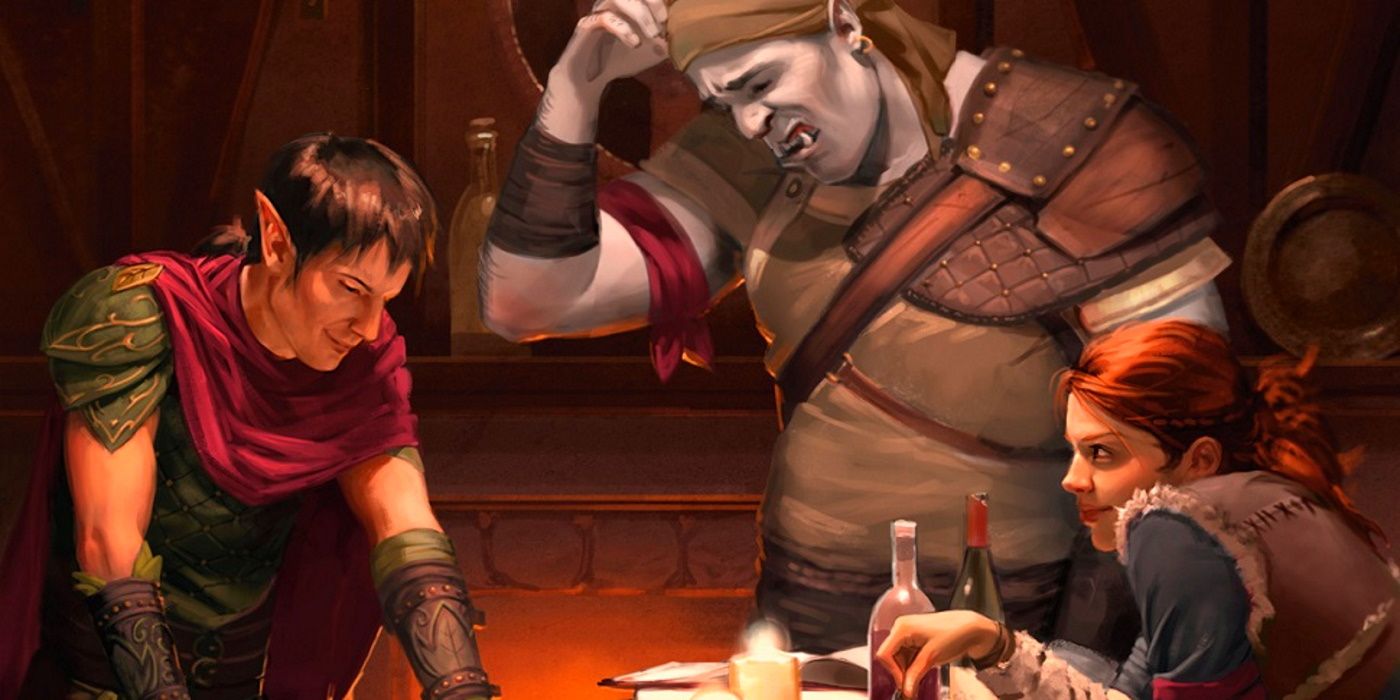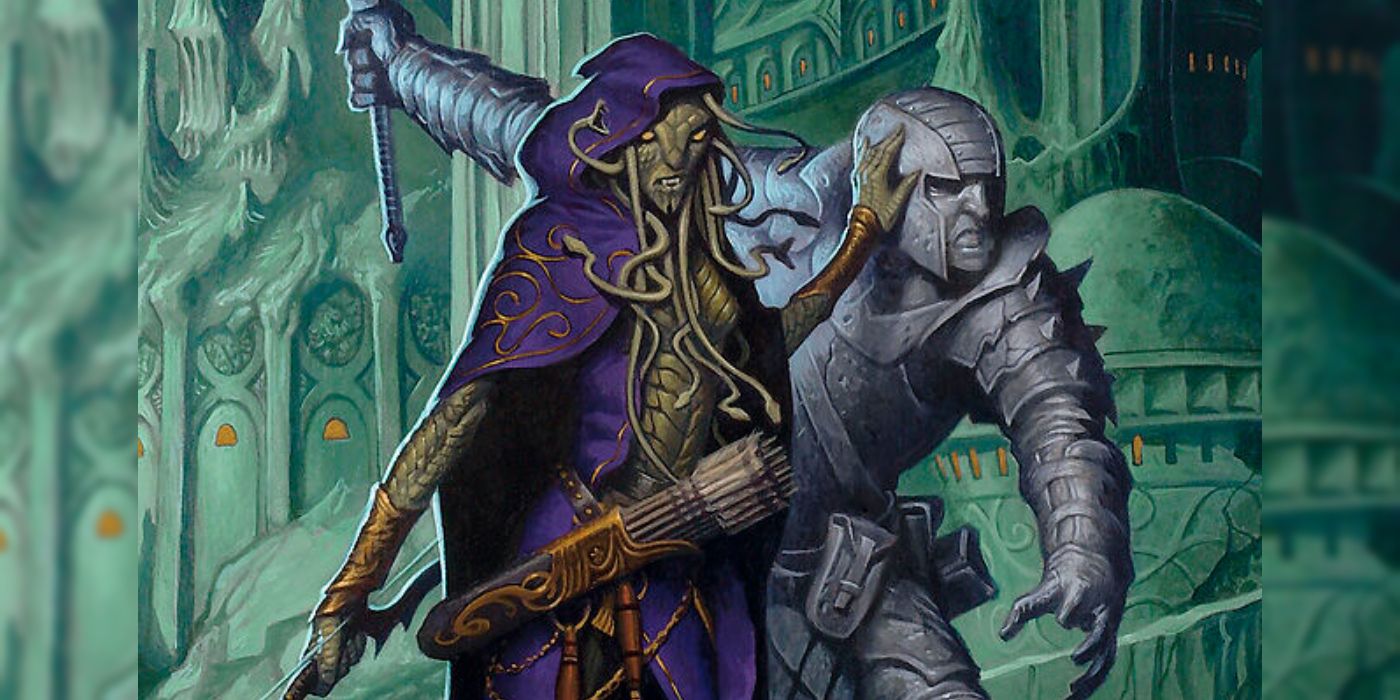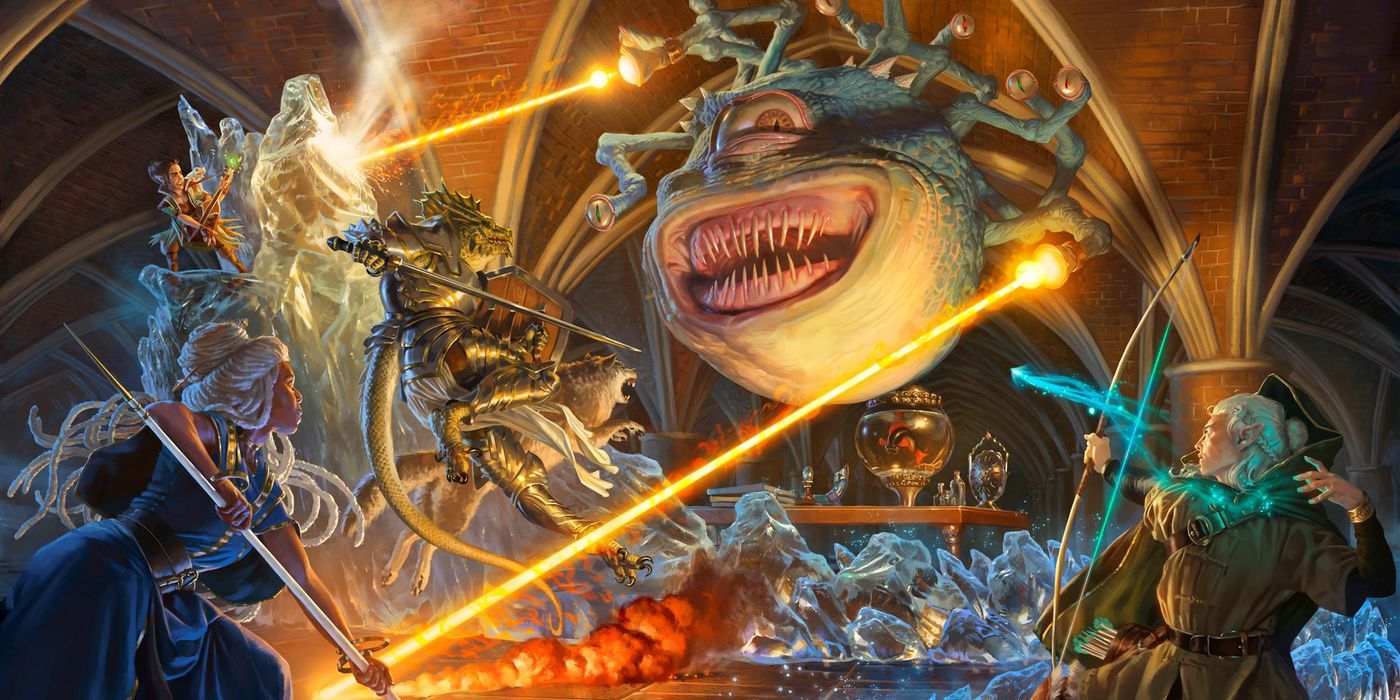DMPCs are a frequent occurrence in Dungeons & Dragons, and one of the best ways to use them is as a campaign’s secret villain. Of course, such a plan can have a big impact on a campaign, but it also needs to be executed well in order to fit the narrative. Done properly, the DM could use this storytelling to create a fantastic endgame.
In Dungeons & Dragons, a DMPC is a major character that is controlled by the Dungeon Master. They have everything that a typical PC would have, including their own class and equipment, but they are fully subject to the DM’s whims and decisions. A DMPC could be a recurring ally of the party, or even a mentor or boss to them. A DMPC can also play a significant role as the villain of a campaign. Evil adventurers make great Dungeons & Dragons villains, and the impact is greater when their role is hidden until the right moment.
Making a DMPC into a campaign’s secret BBEG can be more effective for storytelling than one might think. By utilizing such a character, they will be able to have a deeper impact on the party as well as the players if handled correctly. A DMPC used for this purpose will require a lot of care, so the DM will need to keep several things in mind.
Players Need Reasons Not To Suspect The DMPC

When the Dungeon Master introduces a DMPC into a Dungeons & Dragons campaign, inquisitive players will likely question who this person is and why they are important to the campaign. If the DM doesn’t have anything in place to mask the character’s involvement, the players can solve the mystery too quickly. This is why the DM needs to plan out how they insert the character. When incorporating mystery in a tabletop RPG, the players can’t figure out the plot too quickly.
One way to mask the DMPC’s villainy is to have a preexisting villainous force that the party already expects to be a primary villain. For example, if the party starts the adventure hearing about an evil wizard, or a wicked king, they will expect for that to be the campaign’s primary enemy. Likewise, the DM can keep the DMPC as someone who is helpful, but not too helpful. For example, if the party is searching for an artifact, the DMPC could know a few small details to point them in the right direction, but not give away so much that the party can easily become suspicious.
One more trick that the DM can use is to set up other suspects so that the DMPC can remain beneath suspicion. With a selection of customized Dungeons & Dragons NPCs, the DM can make players think they’re picking up breadcrumbs leading towards another character. Surprising the players is one of the most fun parts of being the Dungeon Master, so one should make sure that the eventual reveal has the impact it needs.
The DMPC’s Villainous Reveal Needs Weight Behind It

A good villain is one that the players feel satisfied about taking down. There are a lot of ways to fulfill this need, from making the journey to encounter them a momentous one to making the villain unlikable in a way that makes their downfall entertaining to the party. One of the best ways to ensure that the party wants to take down the DMPC is to make sure that they do something to push them towards it. This way, even evil characters in the D&D party will want to bring down the bad guy.
The simplest way to do this would be to have the effects of their actions take place over the course of the adventure. While this is easy and a good way to remind players of the danger they’re facing, it would be good if the villain did something to resonate on a personal level. The reveal of their true nature would be a good time to make this happen. For example, they could reveal themselves by betraying another NPC that the party has gotten close to, or make their escape while destroying a portion of the main city. By betraying the players to their face while also hurting people or places they are fond of, they forge an enmity with the players that will drive the conflict.
When creating a Dungeons & Dragons villain, the DM should want the players to take them down. By exposing their vileness right in front of the party, that can light the spark that drives them through the final portion of the quest. By the end, the players should have plenty of reasons to want justice, and that will make the final confrontation more satisfying.
The Final Fight With An Evil D&D DMPC Should Be Thrilling

One obvious fact about the final enemy of any Dungeons & Dragons campaign is that the final battle against them should be an epic one. It is the moment that the players have been waiting for since the quest began, and it’s the DM’s job to make it live up to expectations. With a DMPC as the villain, it’s also the time to use said character to their full potential. Creating a good D&D DMPC takes skill, and so does designing a great final confrontation.
Over the course of the adventure, the DM will have opportunities to give glimpse of the DMPC’s power before their evil reveal. For example, if they are a swordsman, they could have shown impressive techniques while fighting alongside the party. If they are a wizard, they could have shown their magic by deflecting a beast or preventing a disaster. Whatever abilities the DMPC has shown or implied over the course of the adventure should be put into action during the fight against them. It’s the end of the journey, so their skills should be on full display.
Every RPG campaign deserves a grand finale, and an epic Dungeons & Dragons boss battle with the DMPC can provide that in spades. It also comes with the bonus of players potentially anticipating what the DMPC can do and coming into the fight with a plan to counter them. This can be used to reward observant players while still keeping the gravitas of the boss fight.
There are a lot of advantages to using a DMPC as a campaign’s secret BBEG, and an equal amount of challenges. The DM needs to hide the character’s true nature while still preparing for their eventual evil turn and clash with the party. When it works, it can make for one of the most gripping villain arcs that Dungeons & Dragons can provide.




